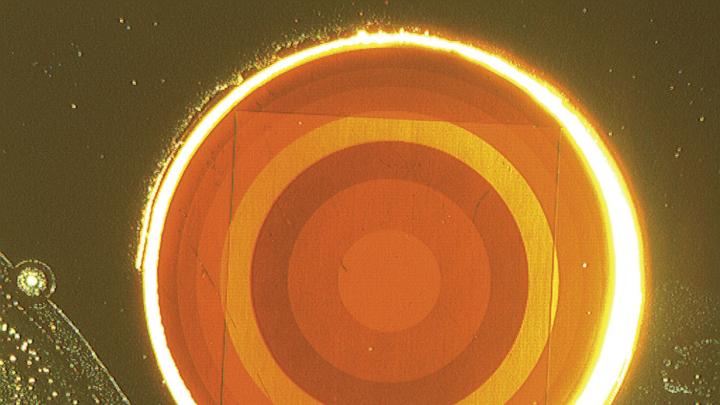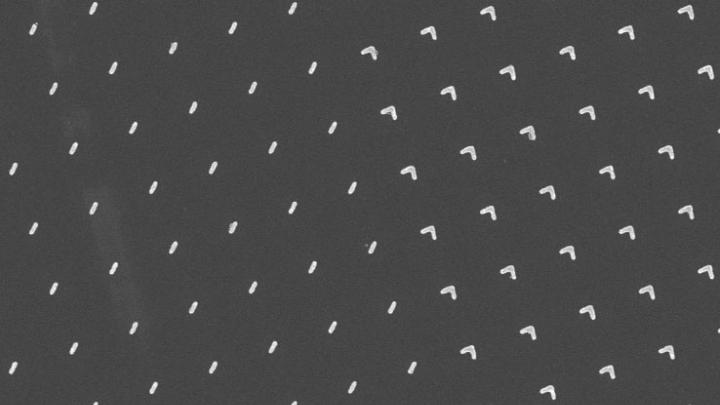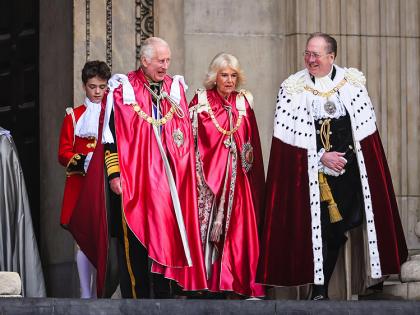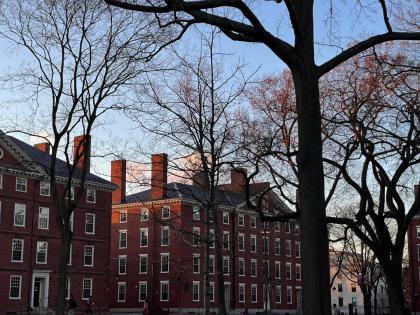Scientists at Harvard’s School of Engineering and Applied Sciences have created a revolutionary flat lens made not of glass but of a layer of gold (seen here in a photograph taken through a conventional microscope). As thin as one-thousandth of a human hair, and just one millimeter in diameter, the lens focuses incoming light by relying on tiny antennae, rather than the phenomenon of refraction, as a glass lens does.
Designed in the laboratory of Federico Capasso, Wallace professor of applied physics and Hayes senior research fellow in electrical engineering, the innovation was recently described in Nano Letters. “The advantage of our lens,” says lead author Francesco Aieta, a visiting graduate student from the Università Politecnica delle Marche in Italy, “is that instead of being bulky and thick, [it] can be very thin.”
Light traveling between two points can potentially take any possible route. When it is traveling in a uniform medium, the route will be a straight line, but if a material such as glass is introduced, the light is slowed and as a consequence may prefer to bend, according to Fermat’s principle of least time: waves of light seeking the fastest overall route between two points may travel farther in a fast medium in order to find the shortest route through a slow one. For this reason, conventional lenses are shaped in a specific way so that all the rays of light, ideally, converge to the focal point. But spherical glass lenses don’t do this perfectly; light passing through the lens periphery has a slightly shorter focal length than light traveling through the center. Correcting for this using additional glass lenses works, but is complicated and makes such optical equipment even heavier.
In the flat lens, tiny gold antennae, etched using electron-beam lithography from a solid gold layer just 55 nanometers thick, delay light not as it propagates through a thick material, but right at the lens surface, introducing slightly different delays (phase lags) in each concentric ring. The antennae (see the inset scanning electron microscope photograph) are v-shaped: “Tweaking the length of the arms and the angle of the ‘v,’” Aieta explains, “allows us to obtain all the amplitudes and phases that we need.” Each concentric ring of the lens is patterned with differently configured antennae that introduce a delay of just the right amount so that some of the light can be focused on a single point. “By changing the distribution of the concentric rings,” he explains, “you can obtain a longer or shorter focal length.”
Although this distortion-free flat lens may one day replace all manner of glass optical systems—from camera lenses to optical data-storage systems—for now Capasso’s team has optimized it for near-infrared light of a single wavelength, a laser of the kind frequently used in telecommunications. It does not currently focus visible light (although that is theoretically possible), but visible light enables the lens’s concentric rings to be distinguished from one another: the differently shaped antennae in each ring scatter the light in a different way, creating the oranges and reds seen in the photograph.









